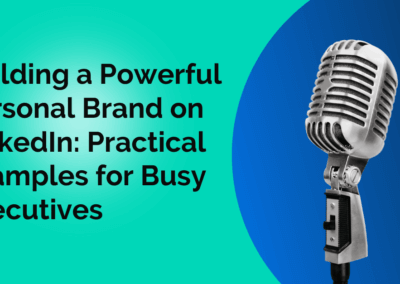Case studies are among the most effective ways to demonstrate expertise in a field and prove that you can deliver real-world results. Having effective case studies boosts credibility during the consideration stage of the buyer’s journey, shares customer success stories that can speak to specific industries and verticals assisted or challenges solved and offers testimonials. Much like customer reviews, when prospects see positive testimonials they are much more likely to convert. In fact, Social Fresh cites that customer testimonials have the highest effectiveness rating for content marketing at 89%. So, how do you write a case study that connects with prospects to deliver these benefits?
We’ve developed a framework for writing a clear and powerful case study. It’s a template that’s part of our Smark Toolbox, full of marketing and sales tools geared toward driving growth. This blog explains the steps for creating a case study — and how to market it afterward. Let’s dive in. There’s a three-part framework for an effective case study: explain the challenge(s) your client faced, share the solution to those problems, and show the results demonstrating how the client solved those challenges.
Here’s a look at each:
The Challenge
Detail the challenge(s) your client faced. Why did they decide to work with you? What were their goals? Had they tried other “solutions” that fell short? This is where you set the narrative for the entire case study, so be sure to nail the struggles and pain points — verify this with the client. In our case study on our client CodeScience for example, we clearly showed their goal by stating “CodeScience came to SmarkLabs seeking a partner to help them craft a strategy to increase the company’s volume of qualified leads.” See the full case study here.
The Solution
Here, you’ll lay out how you and your client decided on the approach to solve the problem and heal the pain. Most businesses will want to show how they were consultative, while those with singular products or processes will explain the specific features that address the exact challenges you laid out previously.
Be sure to include the strategic steps your company took to eliminate the problem and why you chose them for this specific use case.
One hack is to start writing by saying, “Enter [your company].” This is a natural segue dividing the “before” stage of difficulty and the “after” stage where you improved conditions. The more you analyze and explain your thought process, the more you’re able to demonstrate your expertise, from field knowledge to thinking through specific pain points and adapting to client needs.
Consider the level of specificity that’s best suited for your business. Too vague and you’re not showcasing as much value; too specific and you’re in the weeds or sharing too much of the “secret sauce.” We err on the side of publicly sharing the thought, expertise and hard work we bring to the table — part of our value is rooted is in creating and delivering often-intensive campaigns (“easier said than done”). We share one part our solution in the CodeScience case study by saying “CodeScience is engaging prospects with more targeted outreach and segmented campaigns, utilizing messaging across channels from marketing, SDR and sales team for a unified buyer’s journey.” Part of our solution is laid out in a clear manner, allowing us to fully demonstrate our expertise and value. Read the rest of the solution we implemented here.
The Results
Arguably most important section, this lays out the key facts and figures from your solution and shows that partnership with your company was successful for the client. (If it wasn’t, don’t write it!) It’s essential to be able to report on and back up your big wins. If you’re not already, start keeping records of your impact on client KPIs, so that reporting isn’t a mix of sifting and guesswork — most clients appreciate quantitative insights, as well.
Be sure to lay the data out in a way that presents a story of growth and what it has meant for the client since the new processes were implemented. It is always a good idea to visually represent the data, as this is much more digestible for case study consumers. In CodeScience’s case study, we lay out the key facts that relate to the key performance indicators agreed upon, such as stating that “within the first three months of the partnership, CodeScience boosted its conversion rate by 66%.” See the conclusion of our case study here.
Testimonials
Testimonials are one of the most impactful credibility boosters for B2B buyers as demonstrated in the Social Fresh study in the beginning of this blog. Having key decision-makers at current companies (especially with similar titles/roles as prospects) verify your impact lends credibility. The quotes should be from a contact at the client and can either be submitted by them, or you can write them yourself and have the contact approve it. Name and job title should be included to provide validity. Testimonials are a key online review for your business; according to one study, 85% of consumers trust online reviews as much as personal recommendations.
Call to Action
Conclude your case study with a call to action that invites readers to take the next step with your company — ideally, the messaging is contextual and based on the specific success shared in the story. This is a key opportunity to activate prospects who may be convinced by the information you shared to take the next step, or who would like to discuss in more detail.
The Case Study is “Complete.” What’s Next?
You may think that the case study is complete. But now that your story’s told, it’s essential to leverage it effectively. Here’s how to get the most out of it:
Update
Your “finished” case study should be continuously updated as challenges and results evolve over the course of the client relationship.
Test and Optimize
Make sure to analyze how people are receiving the case study and make changes as necessary. Neil Patel tells the story of posting a blog with 2,286 words and it not doing well, so he cut it down to just 615 words and increased the number of leads generated by 39%. We recommend (as you’ve learned if you made it this far) going shorter and simpler with the content. B2B buyers consume fewer long-form pieces, as demonstrated by a joint study between Fractl and BuzzStream showing white papers as the least favorite medium to consume content through.
Leverage and Promote
The case study can also be repurposed across channels and into different assets. Use cases might include:
- Creating a video out of it (bonus points if you get your customer on camera)
- Sharing it in marketing or sales emails, especially with a segmented audience it would really resonate with (similar company size or situation, industry, etc.)
- Pulling quotes from it to be used on different pages of your site
- Promoting it on social media
- Turning it into a webinar featuring your customer(s)
- Presenting one or more successes in a broadly targeted conference panel
Case studies are a great way to show your company can solve many different problems that businesses face. We recommend building an extensive case study library to showcase the problems you have solved for clients you have worked with, and to include that library link in your site navigation. If you could use a launchpad for writing an effective case study, check out our free Smark Toolbox’s case study template (the Toolbox has several other templates and tools, and we’ll be adding more free resources over time — worth getting access and using the pieces you like).
Want to talk about leveraging customer successes as part of a broader growth marketing strategy? Let’s schedule a no-obligation consultation to talk goals — and how to get there.




